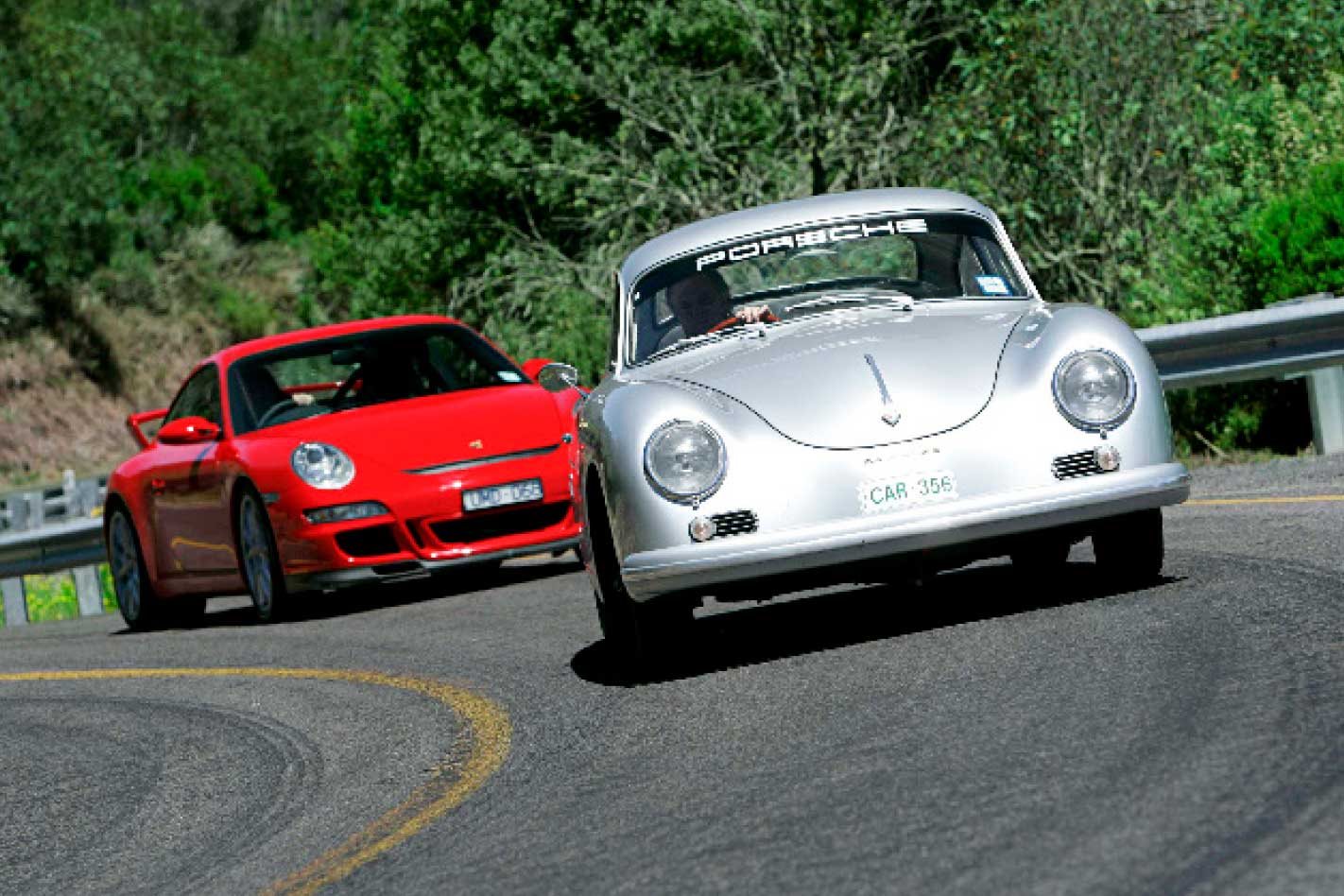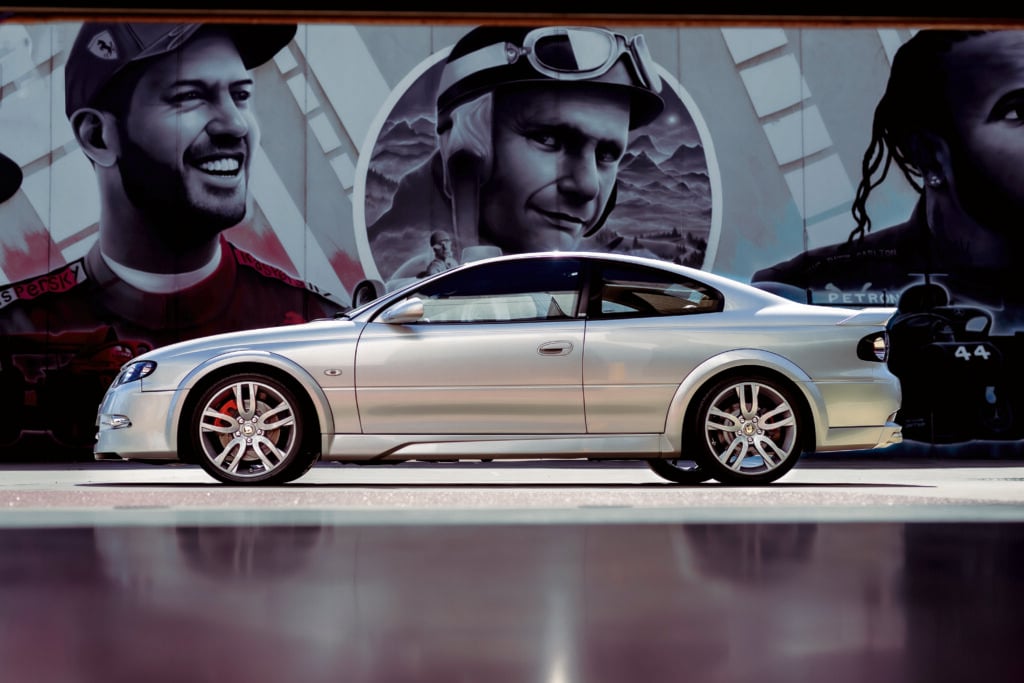50 years is a long time in automotive design. Not only is it almost half the entire existance of the motor car as we know it, the last 50 years (which are the ones I’m talking about here) have seen a huge acceleration in development and technology. Consider the sophistication of electronic injection compared with an oil-damped SU carby (ask your grandad) and you’ll see what I mean.
This feature was originally published in MOTOR’s April 2007 issue
Surely, there’s no way a car from 50 years ago could bear any resemblance to any current model beyond some token visual clues (VW Beetle and Mini for instance). Could it? Well, before the argument’s settled, may I offer up the Porsche 911.

But go back another decade to the 50s and you’ll find the first production Porsche road car, the 356. It lacked a couple of cylinders, but it was still more or less the same design (in shrunken form) and if you look at the way the A model morphed into the B and then the C, you can actually see the 911 emerging. Further proof of evolution comes when you look at the most specialised versions of a pair of cars separated by 50 years.
These days, if you want the spankiest 911 around, you need to go shopping for a GT3. Yes, the Turbo is just as quick (slightly quicker, actually) but with its all-wheel-drive and bloated torque curve, it doesn’t demand the dedication insisted upon by the rear-drive, atmo GT3. And hey, you’ll never convince me that there’s not something other-worldly about a normally-aspirated flat six with its nuts tuned off.
Same sort of thing was at work in 1956 when the other car on these pages, the 356 Carrera GT, was appearing on Porsche price-lists. Not happy with the performance of your normal pushrod-engined 356? Then step right up for the Carrera GT with its double-overhead camshafts on each pair of cylinders; true exotica back when The King’s Heartbreak Hotel was storming up the charts.
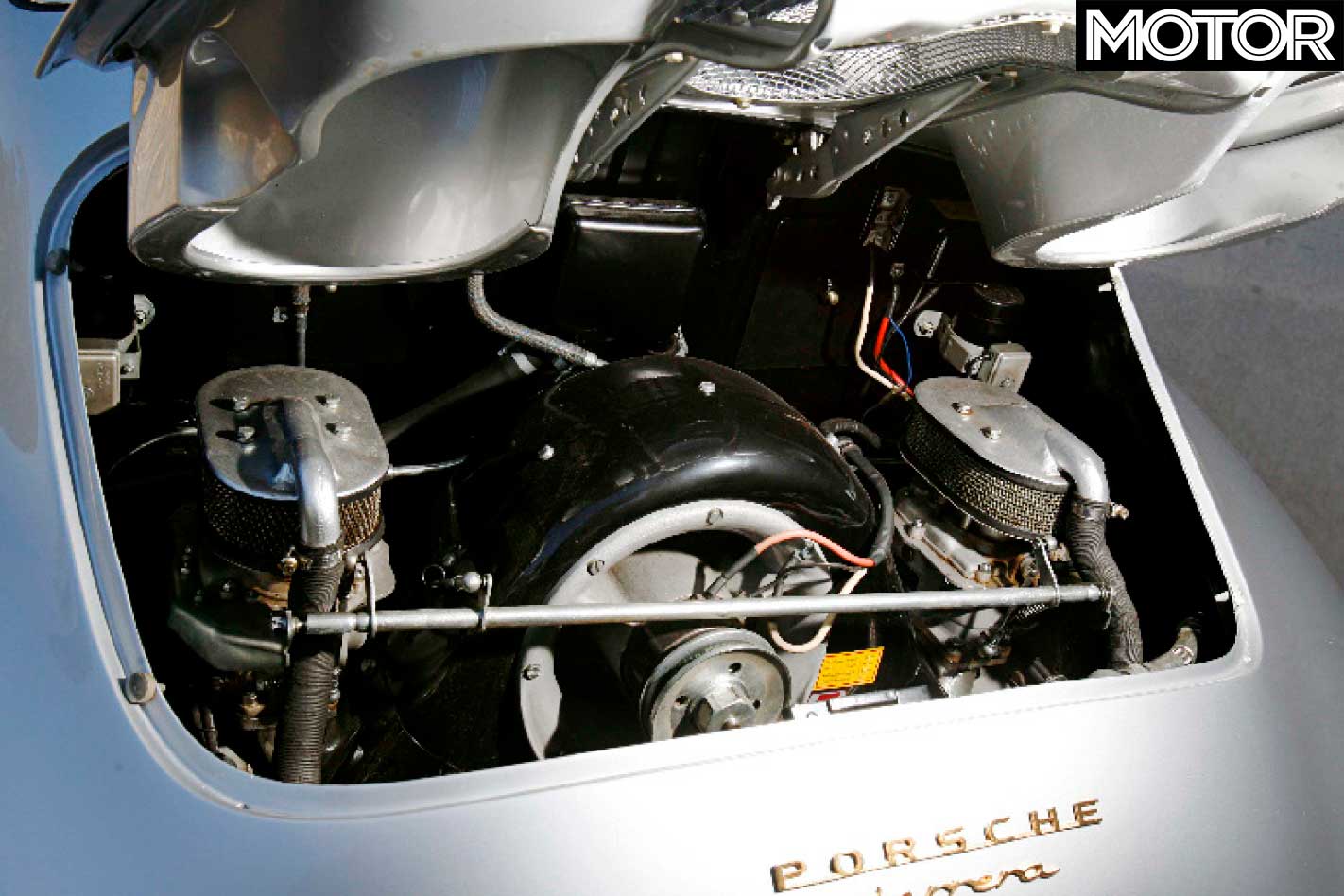
The engine still measures the 356’s standard 1.6 litres, but a crank-driven bevel drive spins the first cam on each bank with another bevel taking drive to the second camshaft. Dual Weber carbs (unlike any Webers I’ve ever seen before) squirt the gas and there’s a very 911-looking upright fan to keep the lid on temperature.
While 90 horsepower was a good figure for a pushrod 356 mill, the GT makes a more stirring 135 (call it 104kW). Mind you, it’s all stacked up high, beyond 4000rpm leaving you working with about a 2000rpm power band.
Back in 2007, the 997 version of the GT3 pumps out 305kW (415 neddies) from 3.6 litres giving it a specific output of 84.7kW per litre compared with 65kW per litre for the oldie. While the former is remarkable, the latter is truly astounding for 1956 and is further proof of the spiritual link between the two. And like the early girl, the new GT3 has a distinct powerband with the real grunt arriving from about 5000 and lasting until 8000rpm.
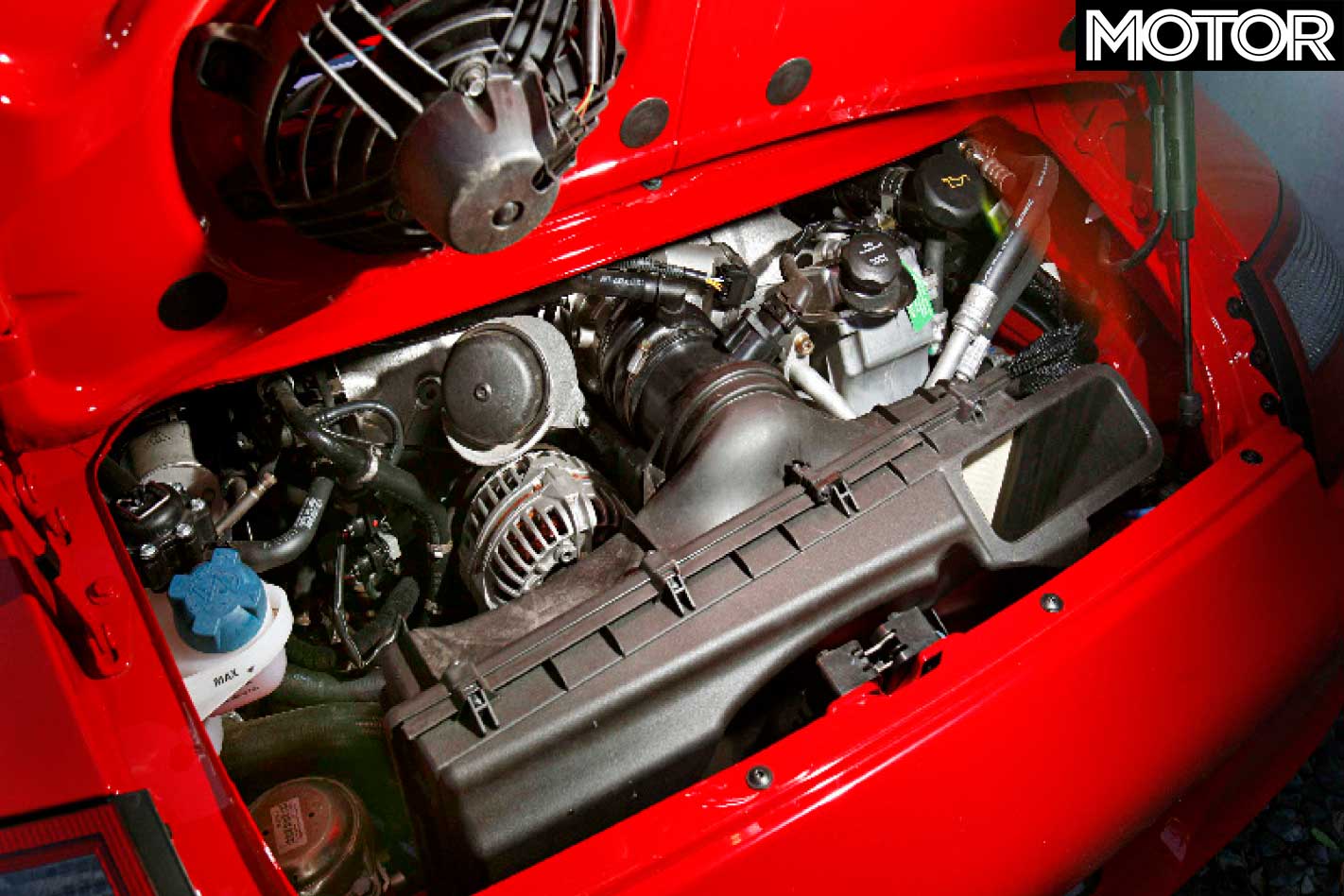
Below about 4000rpm, the GT3 is a bit, ahem, underwhelming. In fact, it’s downright disturbing. Trundle out into the traffic and you can feel a decently muscular torque curve, but the collection of buzzes, thunks and vibes the flat six sends through the cabin makes you wonder what all the fuss is about. And exactly how you’re going to justify that not insignificant purchase price.
It honestly feels like the GT3 has lost the dual-mass flywheel (it hasn’t) with the level of buzzing and zinging going on and what sounds like a rattly clutch at rest. At legal freeway speeds in sixth gear (and the shifter remains the best in the business, although the clutch is pretty heavy) the GT3 is simply not happy, Jan.
The lumpiness comes through the floor and the seat, although at least the steering retains its fidelity. By comparison a 911 Carrera S is a limousine.
But this is the point of the GT3. It’s meant to have a large dollop of mongrel in it. Don’t you get it? Push past the city and onto a twisty strip of smooth hotmix and you bloody well will. Because here – and probably only here (a racetrack aside) – is where the GT3 makes any sense.
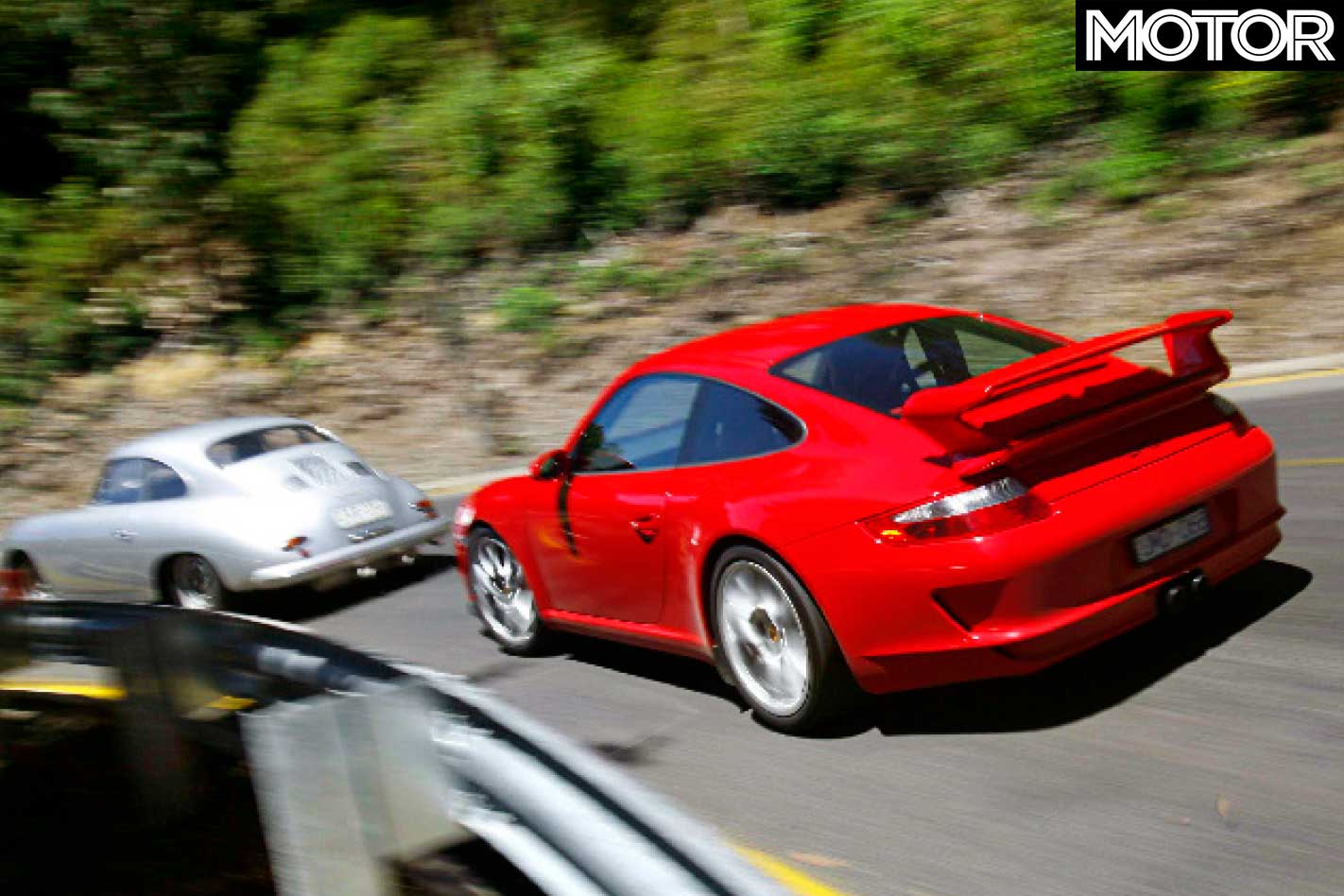
But the talk it talks and the walk it walks on that curly black ribbon is almost beyond description. Keep the revs above 5000rpm or so, pound the brakes into dust and haul on that tiller like scrub hasn’t been invented; the GT3 doesn’t sulk, it doesn’t argue back and it never, ever gives the impression that it hasn’t got more up its sleeve.
Entry speed (like all 911s of the modern era) dictates attitude and the same corner can throw up either under- or oversteer depending on how hot you shove it in. A slower entry seems the business since it allows you to crack the apex on the scone and then pick up the gas early for a blurring, slightly sideways exit. Yes, you need a few brave pills to treat a car such as this in a manner such as that, but the GT3 is always on your side. Believe it.
Obviously, the limits in the 356 Carrera GT are much lower, but the essential requirement to keep the engine spinning hard and be physical with the thing remain. Below 4000rpm, the GT engine is flatter than the Nullarbor… nothing doing.
Oh, it’ll haul itself around in traffic but you need to be mindful of the throttle opening you’ve chosen because those big Webers are guzzlers and seem way too big for 1.6 litres. Take it as read; off the cams, driveability is woeful. But spin the little flat-four up and there’s a distinct surge at 4000rpm combined with a hardening of the exhaust note and suddenly… she’s alive.
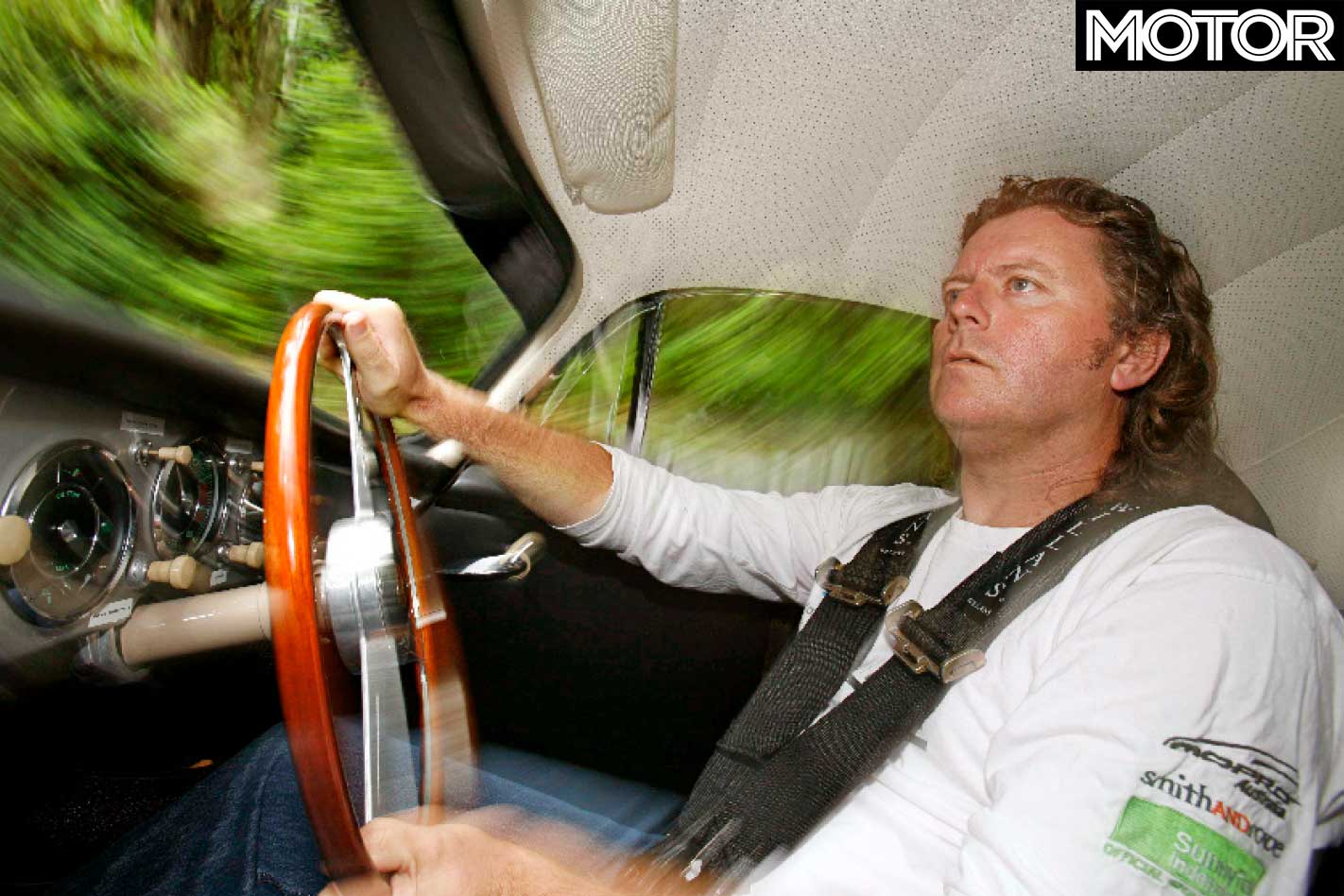
There’s a gulf between each of the four ratios and the spindly shifter is light and accurate, but has throws like a Russian shot-putter. The trick is to max it out in each gear and hope that revs come back to somewhere north of 3500rpm so that you’re not left waiting too long for the grunt to reappear. The non-assisted steering loads up in corners, but the skinny tyres help, and the slender Nardi timber tiller is absolutely alive in your hands.
The nose points true every time and there’s a surprising amount of corner speed available. Drum brakes sound stone-age, but with minimal weight to haul up and big, heat-shrunk-finned alloy covers, they never give up once you’ve worked out that they need a big shove.
Relative to the GT3, the 356’s cabin is tiny. The spindly little wipers and narrow seats seem a bit Toytown and the glasshouse is the squinty variety. Should I even mention the windows that lower and raise via a leather strap? Not that the GT3 is perfect, either.
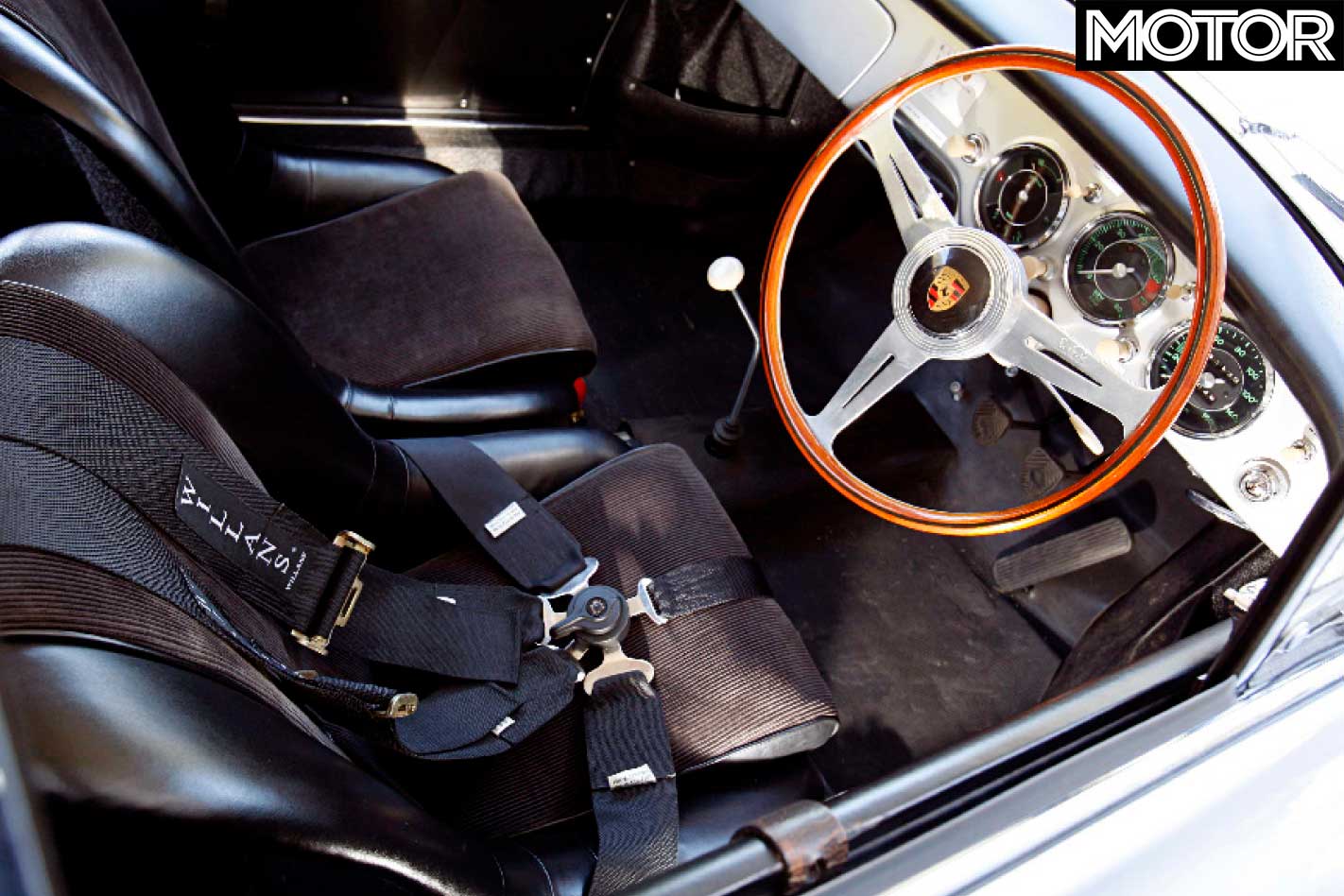
The high-sided seats are buggers to get in and out of and the seat-belt buckle (if you’re not using the harness) jabs you in the butt as you slump into the chair. The roll-cage makes it a two-seater and the fire-bomb takes the place of the passenger’s legs. But it’s those compromises that most closely unite this pair of mutants, perhaps even more so than the obvious mechanical similarities.
Back in 1956, if all you wanted was transport with a Porsche badge, you were much better off with the extra driveability, civility and reliability of the basic, pushrod 356. And whaddaya know? Even in 2007, anybody looking for a Porsche day-to-day driver is going to be happier with a standard Carrera or Carrera S than the grumpy GT3 with its lumpy motor, awkward seats and driveway-scooping ride height.
But if the no-compromise solution is where you’re coming from, or were coming from five decades ago, there’s only one path to take. Sure, technology has forced differences between these cars, but philosophically speaking, they’re dead-set peas from a pod.
The more things change, eh?
Fast Facts
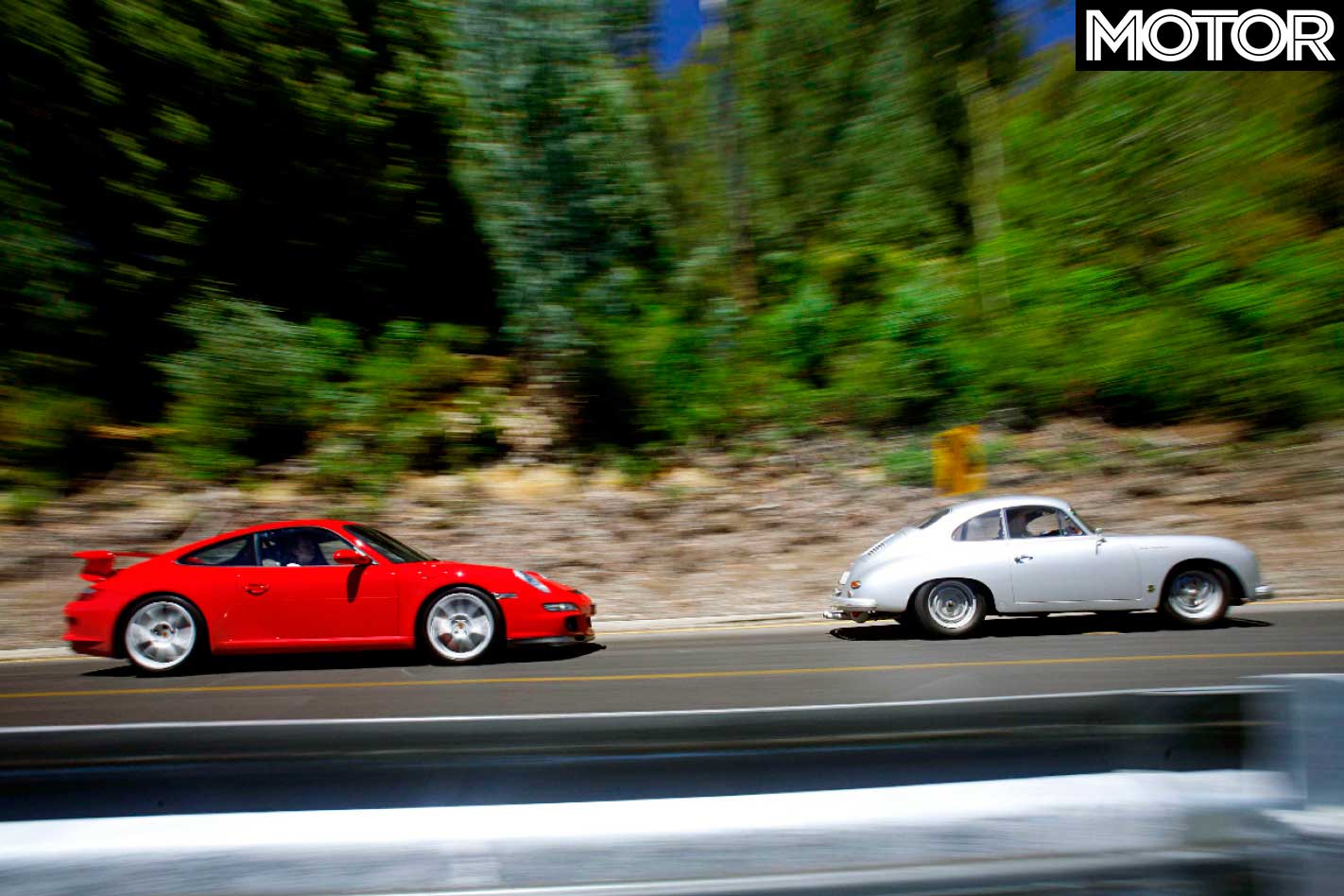
| u00a0 | Porsche 911 GT3 | Porsche 356 Carrera GT |
| Body | 2-door, 2-seat coupe | |
| Drive | rear-wheel | |
| Engine | 3600cc flat 6, DOHC, 24v | 1584cc flat 4, DOHC, 8v |
| Bore x Stroke | 100.0 u00d7 76.4mm | 87.4 u00d7 66.0mm |
| Power | 305kW @ 7600rpm | 104kW @ 6500rpm |
| Torque | 405Nm @ 5500rpm | 120Nm |
| Transmission | 6-speed manual | u00a04-speed manual |
| Weight | 1395kg | u00a0870kg |
| Power/Weight | 219kW/tonne | u00a0120kW/tonne |
| 0-100km/h | 4.3sec (claimed) | 11.0sec (claimed)u00a0 |
| Top Speed | 4.3sec (claimed) | 200km/hu00a0(claimed) |
| Suspension (f) | struts, A-arms, adaptive dampers | double trailing parallel arms, torsion baru00a0 |
| Suspension (r) | multi-links, coil springs, adaptive dampers | u00a0swing axles, trailing arms, torsion bar |
| Brakes (f) | 350mm cross-drilled inner-vented discs, six-piston calipers | Large-diameter steel inserted aluminium drums |
| Brakes (r) | 340mm cross-drilled inner-vented discs, four-piston calipers | Large-diameter steel inserted aluminium drums |
| Wheels | 19 x 8.5-inch (f); 19 x 12.0-inch (r) | 15 x 4.5-inch (f/r) |
| Tyre Sizes | 235/35R19(f); 305/30R19 (r) | 175/70R15 (f/r) |
| Price | $253,200 | $5000 (1958) |
Race car pedigree
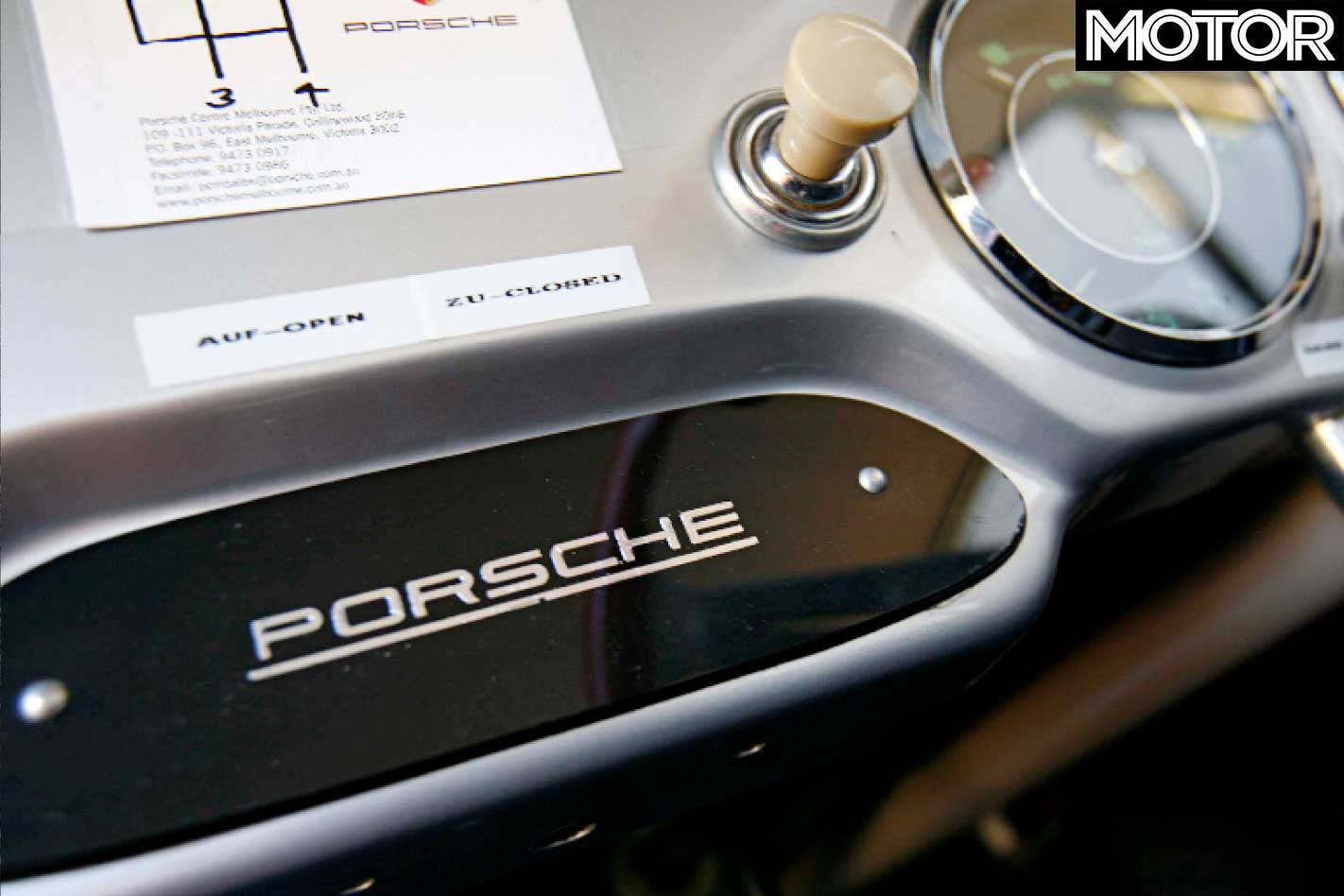
It’s important not to under-estimate the impact the 356 Carrera GT had on the world when it was brand new. These days, it might seem a bit lukewarm with just over 100kW and just four cylinders, but back in the 50s it was an absolute revelation. A gentleman racer could have done a lot worse than hitch himself up to a Carrera GT and, in fact, many races were won by the things both at factory and privateer level.
The racing pedigree was everywhere on the thing, too, from the massive Webers designed to make the thing rev (and to hell with tractability) to the monster fuel tank that devoured most of what would otherwise have been luggage space. Meanwhile, circuit racing, rallying, long-distance road events, you name it, the Carrera GT was there, and quite often on the podium.
The days of the road-registered Carrera GT turning up to race were numbered, however, and in 1959 when Porsche updated the 356 to B-specification, the road-going GT was dumped in favour of a competition-only model.
That didn’t stop it winning races, however, and development continued right through the decade with the final – and fastest – versions capable of around 225km/h and 0-100 in around seven seconds.

